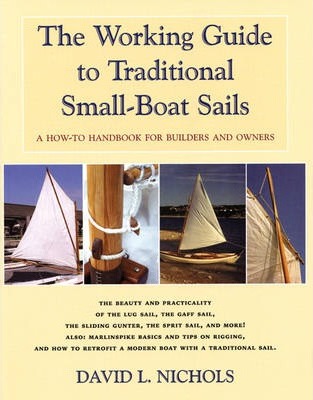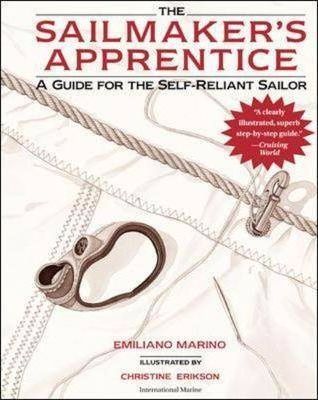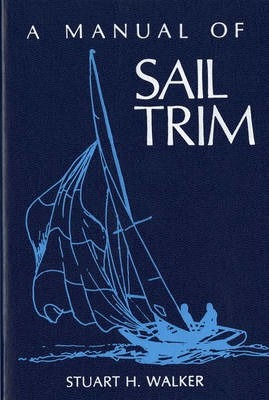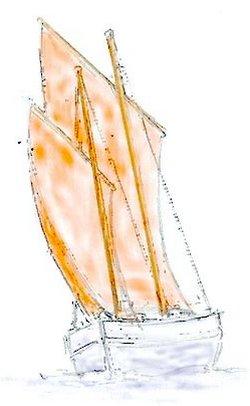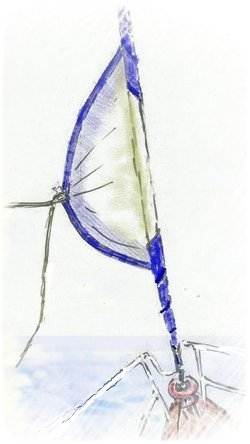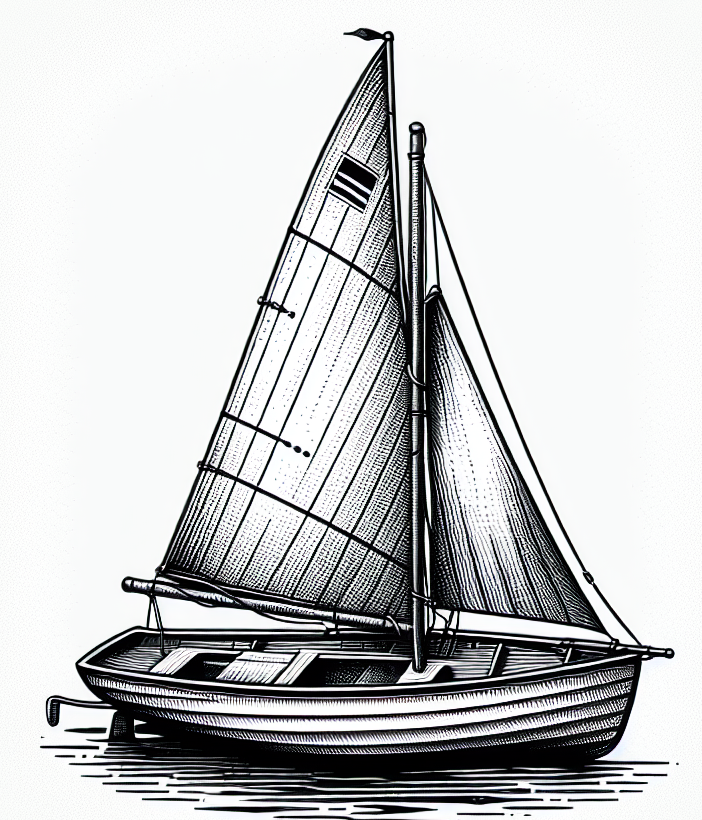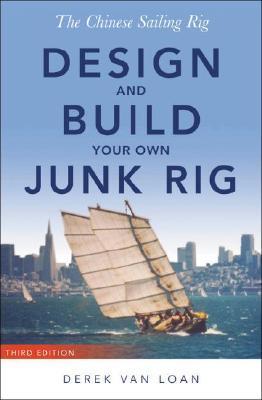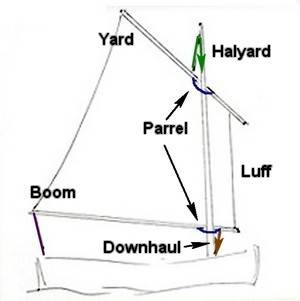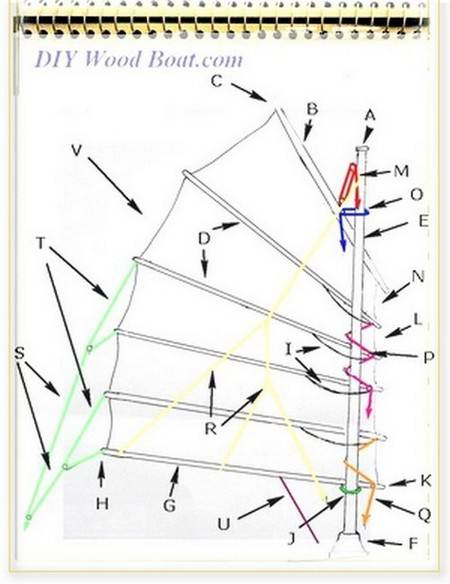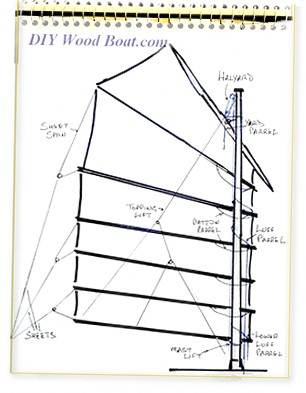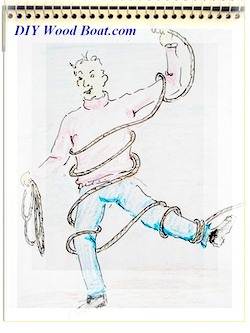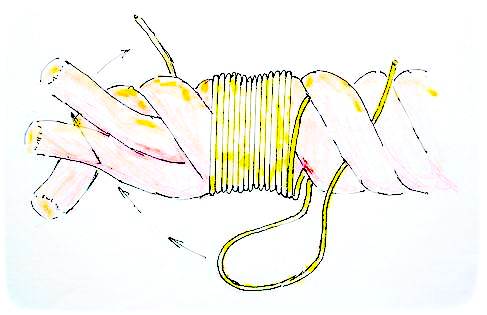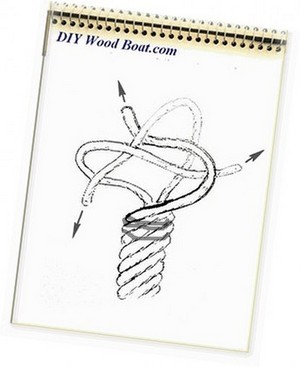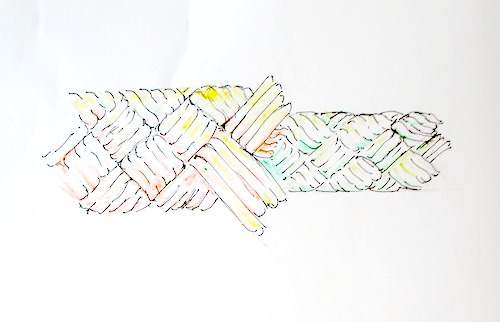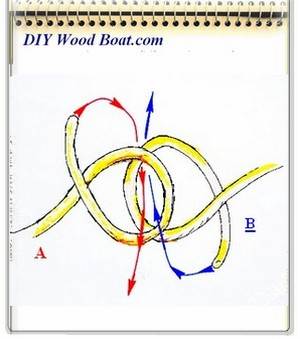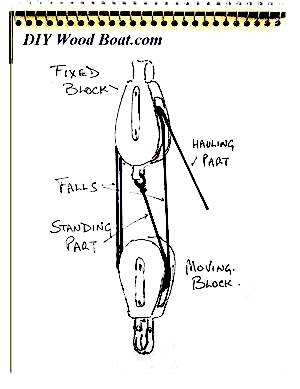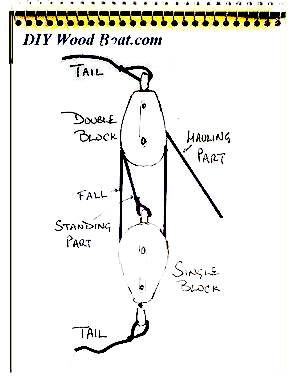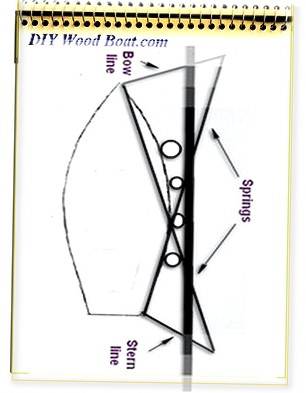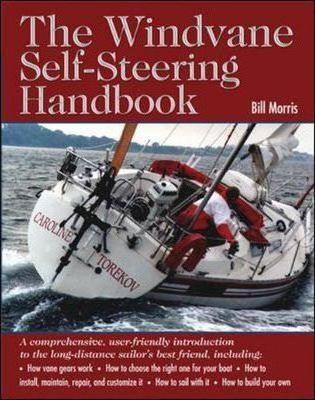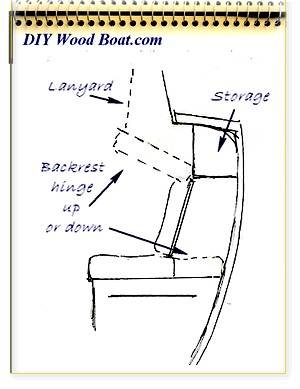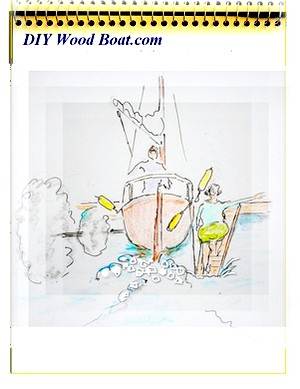- Home
- Your Boats
- Sail Balance
Notes on Sail Balance
Sail Balance is achieved by getting the center of lateral resistance (CLR) of the boat’s hull and the center of effort (C of E) of the sail plan in the correct relation to each other.
The aim is to produce a rig that propels the boat forward, without it rounding up into the wind (weather helm) or falling off downwind (lee helm).
Generally, a boat will balance better if the center of effort of the sail is in front of, or ‘leads’ the center of lateral resistance.
To achieve this, you need a basic understanding of how to determine where the CE and the CLR are for your sail and hull.
Planning Problems
While it is possible to tweak the CE of a sail once it has been built, it is preferable to get the Sail Balance as near correct as possible at the planning stage.
Unfortunately, it is something of a guessing game with a new design.
The problem with designing on paper is that there are many Sail Balance factors that cannot be taken into consideration.
The CE of the sail can be worked out on a drawing of the sail as it would appear when flat.
In practice the sail will develop camber as it is filled by the wind.
When this happens the Centre of Pressure (CP), will move around depending of the setting of the sail, it will generally be somewhere forward of the CE.
Likewise, the CP of the underwater profile will alter as the boat moves forward and heels.
Which means that our Sail Balance calculations will give us a good guide but they will not be exact in all situations.
Sail Balance

In theory, order to obtain proper sail balance while sailing, the center of effort, should be in line vertically with the center of lateral resistance.
But a boat should always carry some weather helm.
There should be just enough to allow her to luff easily, especially in heavy wind but not so much as to require a lot of pressure in the tiller, about 3° is quite sufficient, any more will slow the boat.
Having to put just a little pressure on the tiller to the weather side can help give a good feeling of being in decent control of your boat, without that pressure there would be no 'feel' to the steering wheel or tiller.
To do this requires in theory that the center of effort should be forward of the center of lateral resistance.
The digam shows the center of effort for the jib and the main and the combined total CE for the sail plan.
On the keel is labeled the CLR or center of lateral resistance which is the turning axis for the boat.
Center of Lateral Resistance
The center of lateral resistance is the center of pressure of the hydrodynamic forces on the hull of a boat.
Which, is more or less equivalent to the center of the hull's underwater area as viewed from the side.
If
your boat is afloat you can test this by pushing on the side of the
boat at different places until you find the spot that, when pushed,
produces a perfect sideways movement.

On paper the CLR can be found by tracing the outline of the underwater hull on some card.
Cut it out, and then balance the cutout on a pin.
Where it balances will give you a fairly accurate CLR position
Some suggest that you omit the rudder area when finding the CLR, others that you use between 1/3 and 1/2 the rudder area.
Center of Effort
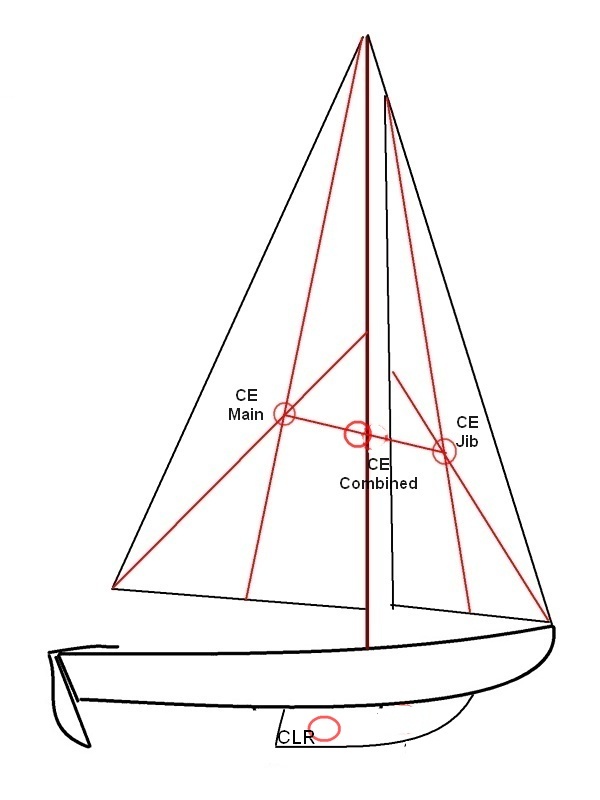
The Center of Effort (CE) is the center of the area of the sails.
With a bermudan rig the CE is usually determined using 100% of the foretriangle area, omitting any overlap of the sails.
On boats that do not carry genoas the CE may be calculated as the center of the working sails.
To determine the CE on paper a line is drawn from one side of the sail to the opposite corner.
Then, do the same for another side.
The resulting intersection of lines is the theoretical or geometrical center of effort (CE) for each sail.
The Combined CE of both sails is found by drawing a line between the individual CEs.
The combined CE will be a point on that line whose position is relative to the total areas of each sail.
E.g. if the main is twice the size of the jib the combined CE will be 1/3 of the way along the line towards the jib.
Here is one formula for working out the combined Center of effort
- Distance CE Main, to CE Jib = a
- Area Main = y
- Area Jib = n
| Distance from CE main to combined CE | n x a | |
|---|---|---|
| = |
|
|
| y + n |
The CE of a trapezoidal sail is worked out differently than that of a triangular sail.
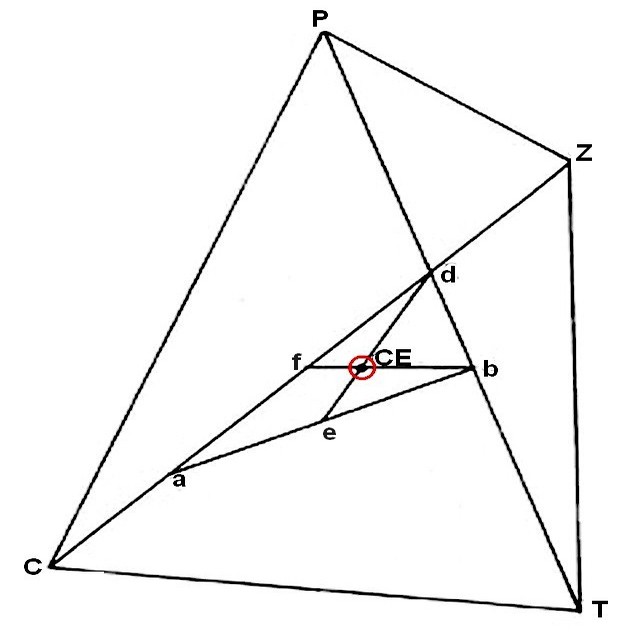
This is perhaps the simplest is method.
Draw a line from the throat (Z) to the clew (C).
Then, another from the peak (P) to the tack (T).
The two lines intersect at d.
Now make the distance C to a, equal to the distance from d to Z.
Similarly make T b = d P.
Connect a b.
Then with f as the center of a d, draw a line to b.
Similarly, with e as the center of a b, draw a line to d.
Where these last two lines cross is the CE.
If you are planning to add a jib, then work out the combined CE for the whole sail plan in the same way as for the bermudan rig.
Lee Helm
Generally lee helm is something to be avoided.
However, having got it, there are ways to eliminated it.
Correcting lee helm or increasing weather helm may be as simple as moving the weight of the crew forward.
Decreasing the size of the jib or removing it altogether will move the CE aft and shorten the amount of lead, thus improving the Sail Balance.
Increasing the rake of the mast will also move the CE aft therefore decreasing the lead.
If this isn’t enough, then you must bite the bullet and move the whole mast farther aft.
What might we use lee helm for?
We know lee helm means the boat will naturally want to sail itself downwind.
How about if our destination lies downwind and we'll be traveling on a run or close to it?
We might very well choose to be lazy and just use a large sail forward such as a cruising spinnaker.
Maybe
not quite so fast as if we also used the main but the boat will be easy
to control and sail with no possibility of an accidental jibe.
Weather Helm
A little weather helm is a good thing.
But too much weather means that the CE is too far aft.
As well as this requiring a lot of effort pulling on the tiller to keep her on course, too much angle on the rudder will produce drag, slowing the boat.
It is also worth remembering that when a vessel is heeling the shape of the submerged part of the hull will alter, which can also cause a turning moment that pushes the bow to weather.
However, if, once launched, a boat is found to have too much weather helm there are several ways to improve the Sail Balance.
Reefing the main, making it smaller, is perhaps the best cure of all.
Moving the mainsheet traveller to leeward and tightening the halyards will flattening the main helping to bring the CP of the main forward.
The rake of the mast can be decreased, by tightening the forestay and
easing the backstay, thereby moving the center of effort forward and
decreasing the lead.
Adding a jib, increasing its size, or
moving it forward are just a few other methods to decrease the lead and
improve the Sail Balance.
With a gaff rig having some adjustability at the mast partner is always a good idea.
Load placement can also be used to will change the Sail Balance of a small boat simply by shifting the weight of the crew.
Quotes on Rig Design and Sail Balance
Any rig her owner likes to work is the best rig. John G Hanna
No boom should be twice the beam to avoid tripping the boat up. Philip Bolger
Boomless sails need at least 10 degrees of beam to work, preferably 12. Philip Bolger
The effective centre of effort of boomless sails is somewhat aft of where an equivalent boomed sail’s would be. Philip Bolger
Don’t
make the narrow angle at the top of a triangular sail too narrow. If
it’s less than 27 degrees, the sail maker will not be able to get any
shape into it. Philip Bolger
Cutting a small convex curve shape into the luff of a square-shaped sail is a quick and cheap way of getting a good shape. Jim Michalak
Sail area can be estimated using the following formula:
(Ballast
in tons x distance in feet from the centre of gravity to the
metacentre)/(Sail area in sq ft x height of centre of effort in feet
above the metacentre) = R where R is some value in the range 16/10,000
to 24/10,000. T Harrison Butler, attributed to Admiral Alfred Turner
The sail area of a 14 foot cruiser should be 150sq ft; for a 16-footer 325sq ft; and for a 20 footer, 525 sq ft. From a graph published in Elements of Yacht Design by Norman L Skene
Stability is the engine of the sailing vessel. Des Sleightholme
The appropriate sail area of a vessel varies with its displacement in tons squared and then cube-rooted times a fudge factor constant. A vessel with 0.25 tons displacement will have a sail area of 100sq ft, one of 0.5 tons 150 sq ft, 0.75 tons 190sq ft, 1 ton 270sq ft. John Teale
On a sloop the headsail should have about 50 per cent of the area of the main, and on a cutter the headsails should have about 70 per cent of the area of the main. John Teale
Good Sail Balance can be achieved by placing the centre of gravity of the sail plan directly over the centre of lateral resistance, or perhaps an inch or two ahead of it. John F Sutton
For Sail Balance, The lead of the centre of effort over the centre of lateral resistance should be 12-14 per cent of the waterline length in the case of a shallow hull, fin keel or centreboard craft; about 10 per cent for deeper, more traditional yachts; and about 8 per cent for cruising yachts of classic form. John Teale
Balance: for racing machines of the scow type the lead of CE over CLR should be 5 to 15 per cent of the waterline length; for shoal, full-ended centreboarders, the lead lies between 7 and 11 per cent. For full-ended keel boats the lead is generally a little less; for cruising boats of normal form it is about 6 per cent. Norman L Skene
Sail Balance
To achieve balance, the correct lead of CE over CLP (=CLR?) as a percentage of LWL is 7-12 per cent for a schooner; 11-14 per cent for a ketch; 12-15 per cent for a yawl; and 13-17 per cent for a sloop or cutter. Dave Gerr (The Nature of Boats)
In flat-bottomed boats, putting the CE directly over the CLR seems to achieve good balance just about every time; however it is different in boats with a deep vee-section near the bows. Jim Michalak.
Sail Balance, again. The shape of the leading edge of the keel is one of the chief factors in determining the balance of a boat. If the edge is sharp the forward part of the boat tends to bite into the water and hold its position, whereas a a rounded or blunt leading edge will tend to slide off sideways when a boat is sailing to windward - so what we might call the true centre of resistance is further forward inn a boat with a sharp leading edge than it would be in the case of one with a blunt leading edge. In other words, we can't really know where the centre of balance is likely to be without doing tank tests. F S Kinney .
The diameter of a traditional solid wood round boom should be 0.02 of the boom length. For a loose footed sail, it should be 0.022 maximum, tapering to 0.02 at the ends. The diameter of a solid wood gaff should be 0.017-0.019 of gaff length. John Leather.
The best proportions for a gaff mainsail are luff 1.0, head 0.833,
leech 1.73, foot, 1.02. The angle of the gaff to the centerline of the
mast should be 30 degrees. The rake upward of the boom should be 6
degrees. If a topsail is to be carried, then the angle of the gaff
should be eased to about 42 degrees. John Leather.
The simplicity of the cat rig is a recommendation in itself. William and John Atkin.
For
singlehanding a large boat and therefore obliged to split up the rig, I
would have a ketch with the area of the mizzen about two thirds of the
mainsail, and the mizzen mast stepped about as far forrard as
practicable. There would then be some chance of the vessel working to
windward under mizzen and headsails in heavy weather. F B Cooke.
The permanent backstay should be designed to clear the end of the boom regardless of how high the latter may rise in jibing. William and John Atkin.
I believe only a solid stick (mast) has any place on a gaff-rigged boat. Oliver Tantanen.
A
good figure to aim at for important shrouds is to have the cap or upper
shrouds make an angle of 14 to 15 degress with the centre-line of the
mast. John Illingworth.
Sail area is modest in the
small cruiser simply because the buyer cannot be trusted to reduce sail
to a safe area when it begins to blow. Des Sleightholme.
Sail Balance
Books
